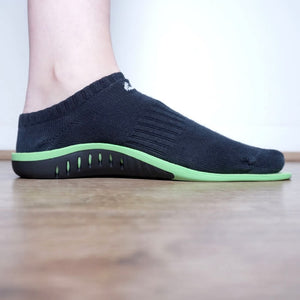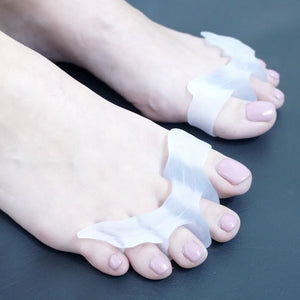Should You Undergo Surgery For a Bunion?

If your bunion is unbearably painful and has a detrimental effect on your everyday life, then surgery to remove the bunion should be considered. Your GP can refer you to a surgeon if required.
Before you consider it however, find out if you really need surgery, what types of surgeries are available and what the associated risks are.
Do You Need Bunion Surgery?
A bunion, scientifically known as Hallux Valgus, is a protrusion of the bone located at the first joint of the big toe. It could also occur at the base of the little toe which is referred to as a tailor’s bunion or bunionette.
Although there is no definitive cause of a bunion, many medical experts have attributed it to:
- Repeated pressure on the foot’s joints over a long period of time.
- Wearing shoes with a narrow toe box (such as high heels) that squishes the toes together.
- A hereditary condition due to foot shape and structure.
- A medical condition such as arthritis.
Many people with bunions relieve the joint pain by embracing simple treatments such as using pads or wearing shoes with wide toe boxes. However, if such treatments do not work and it’s interfering with walking or exercising, a doctor can recommend surgery.
You should not and cannot voluntarily choose to have bunion surgery because you do not like how your feet look. This is because; the risks associated with surgery could outweigh the advantages.
If your bunion is detrimental to your daily activities and affecting your quality of life, then visit your GP and they can provide you with a guided assessment.
What Does the Surgery Involve?
To determine which surgical procedure to use, the surgeon needs to determine the severity of the bunion.
- Mild Bunion – The recommended procedure for this type of bunion involves the surgeon removing the enlarged part of the bone and realigns the surrounding ligaments, tendons, and muscles to the joint.
- Moderate Bunion – The surgeon cuts the bone and re-aligns it back to its original position. The severity of the bone and the location of the bent joint determine whether the bone needs to be cut. On top of that, the surrounding muscles, tendons, and ligaments may require re-positioning.
- Severe Bunion – A severe bunion requires removing out the enlarged part of the bone, cutting and realigning the bone. It also involves repositioning the tendons and ligaments.
- Arthritic Bunion – This occurs when the joint is irreparable as mostly seen in arthritis. Such a joint needs to be fused. This prevents movement and pain and allows the bone to heal together. In other rare cases, replacement implants can be used.
Other factors that may influence the type of procedure used include the age, activity level, bones connective tissue, general health of the patient and the condition of the bone.
The Surgical Procedures
Osteotomy
Osteotomy is the process whereby a surgeon makes cuts on your toe bone in order to correct the deformity of the joint.
The doctor then fixes the breaks with pins, plates, and screws so as to make the joint more straight and balanced. Osteotomy is carried out in combination with soft tissues. Both procedures are necessary to realign the joint.
Arthrodesis
This surgical procedure is normally carried out on patients with severe arthritis or severe bunions. The surgeon removes the joint surfaces and inserts wires, screws, and plates to hold the surfaces together until the bones heal. This procedure is also performed on patients who have had unsuccessful surgeries before.
Exostectomy
This procedure simply removes the bump on the joint of the toe. It does not go to the root cause of a bunion. This means that the surgical procedure does not re-align the bone. It rarely corrects the root cause of the bunion. If a surgeon performs exostectomy without osteotomy, there is a possibility of the deformity returning.
Resection Arthroplasty
This procedure is normally performed on elderly patients, with severe arthritis, or those who have had an unsuccessful surgery before. The surgeon removes the damaged part of the joint, which creates space between the joints.
This procedure can interfere with the push-off button of the big toe therefore, it is usually not recommended.
Pros
- Provides pain relief
- Improves the appearance of the foot – people with the big toe deformity tend to shy away from exposing their foot in public. The surgery reverts the foot back a normal appearance.
- Restores quality of life – allows you to perform physical activities as normal and as a result, it restores self-confidence and quality of life.
- Surgery is the only way that you can remove a bunion
Risks
Bunion surgeries just like any other type of surgery can be risky. The possible complications that can happen include:
- You may experience pain after surgery – before the joint is completely healed, you may experience some pain for about 2-3 months. This can make it uncomfortable for you to walk around affecting your daily activities.
- Not all bunion surgery procedures guarantee success – the surgery might not go well as expected and in some cases, a bunion may even come back.
- Physical complications which include infection, healing delay, numbness of the toe, stiffness, swelling, continued pain and nerve damage.
- In some cases, the surgery can result in overcorrection of the problem. The big toe may extend and move away from the other toes as a result. Any other issue that may occur depends on your health condition.
Availability and Cost
The surgery depends on the surgical procedure to be used and the level of damage to the joint. The total cost of the process includes the consultation fee, X-Rays, and the surgery process cost.
In the United Kingdom, the surgery is done free of charge through NHS to the people that require it the most. However, the waiting time can be long. Find out more about bunion surgery here.
Alternative Bunion Treatments
Before you consider undergoing surgery, ensure that you’ve tried alternative bunion treatments to relieve the symptoms.
Such treatments include using ice therapy, wearing bunion protectors and correctors, using bunion splints and performing corrective bunion exercises.






Leave a comment